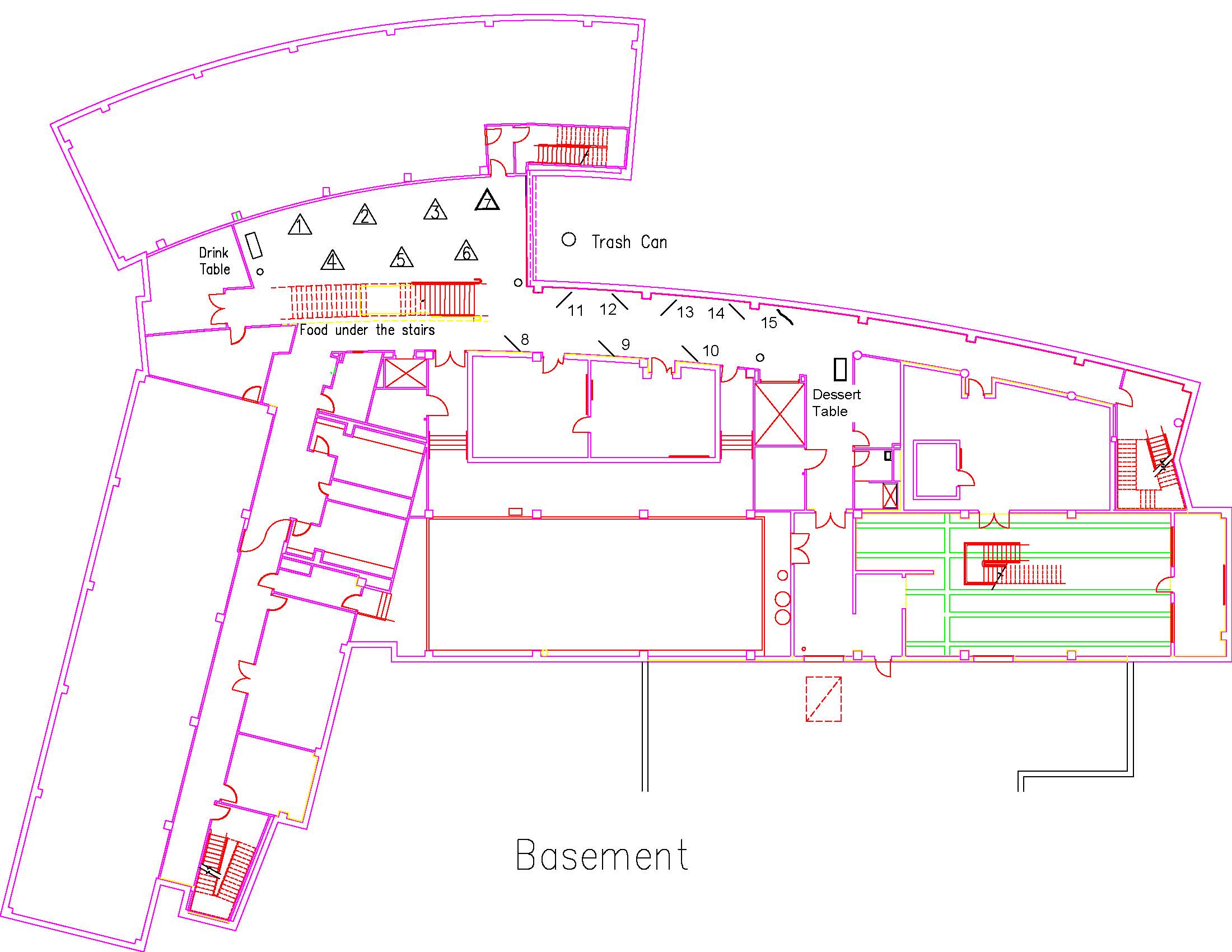BIOL2019JOHNSON36911 BIOL
Connecting Developmental Thyroid Disruption to Impaired Reproductive Success in Fathead Minnows
Type: Graduate
Author(s):
Abigail Johnson
Biology
Advisor(s):
Marlo Jeffries
Biology
Matt Hale
Biology
Location: Session: 2; 1st Floor; Table Number: 6

(Presentation is private)Thyroid disrupting compounds (TDCs) are known to interfere with normal thyroid hormone (TH) signaling. During embryonic and juvenile development, thyroid hormones modulate a variety of biological processes such as neurogenesis and the growth of the skeletal and muscular systems. Therefore, the majority of research on early life-stage (ELS) thyroid disruption has focused on its effects on growth and development. However, recent research has shown that ELS TDC exposure can also have adverse effects on reproduction later in life. Specifically, fathead minnows exposed to propylthiouracil (PTU), an anti-thyroid drug known to inhibit the synthesis of thyroxine (T4), during early development (from hatch through 42 days post hatch) experienced a 50% reduction in fecundity relative to controls. Interestingly, this statistically significant reduction in fecundity occurred when males, but not females, were subjected to ELS PTU exposures. After ruling out the possibility that ELS thyroid disruption altered testicular function, it was hypothesized that the observed reductions in fecundity resulted from changes in male reproductive behavior. To investigate the potential for and mechanism underlying PTU-induced alterations in male behavior, brains of PTU-exposed and control males were collected immediately after exposure for transcriptomic analysis. Of the genes that were found to be differentially expressed between the brains of PTU-exposed and control males, several were associated with axon guidance, behavior, and sex steroid signaling. Specifically, PTU-exposed males experienced significant reductions in the expression of serotonin receptor, fibronectin, estrogen receptor alpha, and aromatase. Given the known role of these genes in development and sexual differentiation of the male brain, these results provide evidence supporting the hypothesis that ELS chemically-induced hypothyroidism leads to altered neurogenesis and subsequent alterations in behavior. Overall, the results of this study may help link transcriptomic alterations in the brain to alterations in reproductive behavior, which has important population-level consequences.
BIOL2019KRZYKWA27064 BIOL
Validating methods for the assessment of neurological function in larval fathead minnows
Type: Graduate
Author(s):
Julie Krzykwa
Biology
Gabby Lamanteer
Biology
Advisor(s):
Marlo Jeffries
Biology
Location: Session: 1; Basement; Table Number: 5

(Presentation is private)Alterations in neurological development and/or vision have been noted after exposures to a variety of environmental contaminants, including heavy metals, pesticides, pharmaceuticals, and estrogens. Despite the growing interest in assessing the neurotoxicity of toxicants, routine toxicity testing methods do not currently include the assessment of endpoints capable of predicting adverse impacts on neurological development. A toxicity test featuring embryonic fathead minnows - the fish embryo toxicity (FET) test - was recently developed; however, it does not include neurological-related endpoints. Development of such endpoints would expand the utility of the FET test and allow for the assessment of neurological teratogens. Previous studies have identified embryonic eye size as a potential FET test endpoint, and though there is limited evidence suggesting that these alterations are indicative of altered neurological development, studies validating the link between eye size and organism fitness are needed. The overarching goal of this project is to investigate whether reduced embryonic eye size at the conclusion of the FET test is predicative of altered vision or neurological function in larval fathead minnows. But first, assays for assessing vision and neurological function in larval fathead minnows must be developed and/or validated. Therefore, the objective of the present study was to validate methods to assess vision/neurological function in larval fathead minnows. Three assays were developed: the optomotor response assay, a feeding assay, and the c-start assay. The ability of these assays to identify alterations in the neurological function of larval fathead minnows was assessed by exposing larvae to three doses of the known neurotoxicant chlorpyrifos for 5 or 12 d. These results will be utilized in future studies investigating whether reductions in embryonic eye size are predictive of sublethal adverse effects and can also be utilized by other researchers interested in assessing vision/neurological function in larval fathead minnows.
BIOL2019MIRKIN43123 BIOL
Predation Release of Texas Horned Lizards (Phrynosoma cornutum) Living In Small Towns
Type: Graduate
Author(s):
Stephen Mirkin
Biology
Mary Rachel Tucker
Biology
Advisor(s):
Dean Williams
Biology
Location: Session: 1; Basement; Table Number: 1

View PresentationTexas horned lizards Phrynosoma cornutum are a threatened species in the state of Texas, due to population declines and extinctions, especially in the eastern part of their range. Texas horned lizards are still found in small towns in south Texas and can reach densities that are much higher (~50 lizards/ha) than in natural areas (~4-10 lizards/ha). We used models of Texas horned lizards to test whether predation levels might be lower in two south Texas towns than on a ranch that was located in south Texas. We constructed Texas horned lizard models from urethane foam, a material that is ideal for preserving marks (bites and pecks) left behind by predators. Models (n = 126) were left in the field for a period of 9 days in each location and marks left behind by predators were categorized accordingly. We conducted this experiment in June and again in August 2018. We found significantly less attempted predation events in the towns (n = 1 predation attempt) compared to the ranch (n = 60) and no differences between months. Anecdotal observations over the past 6 years also support a lack of many horned lizard predators in the towns. Our results suggest that Texas horned lizards may be under heavy predation pressure in natural environments and that lizards living in urban areas may be escaping some of this pressure leading to higher than normal lizard densities in some small Texas towns.
BIOL2019RHOADS18920 BIOL
Camouflage in Conservation: Background Color-Matching in the Texas Horned Lizard (Phrynosoma cornutum)
Type: Graduate
Author(s):
Dustin Rhoads
Biology
Dean Williams
Biology
Advisor(s):
Dean Williams
Biology
Sarah Hill
Psychology
John Horner
Biology
Laura Luque
Biology
Location: Session: 2; 3rd Floor; Table Number: 8

View PresentationMost of the literature on the basic ecology of Texas Horned Lizards cites "cryptic color pattern" as the first line of defense against predation in this taxon, and yet the degree to which horned lizards actually color-match their backgrounds has never been quantified. Texas zoos and state wildlife agencies are releasing captive-bred hatchlings and translocated adults to parts of their former range; however, the new populations are not self-sustaining, with the majority of releases lost to predation. Background color-matching has not been quantified for these reintroduction efforts but may be important to take into account when moving lizards into a new habitat where predation may be higher if they are not closely color-matched to the local soils. I quantify background color-matching in this taxon across its known range in the United States and in Mexico from in situ photos taken, as found, in the wild. I also present background color-matching variation and trends both within and between phenotypically and genetically diverse populations and ask whether lizards more closely match their local soil colors than soils from other areas. Finally, I suggest a method for zoos and wildlife agencies to score coloration in their captive populations of lizards, thus possibly enabling these institutions to objectively take into account color-matching a priori as an applied conservation strategy to potentially increase the survival of reintroduced Texas Horned Lizards.
BIOL2019SCHENK52240 BIOL
Comparative Disturbance Response Between Two Closely Related Avian Species
Type: Graduate
Author(s):
Amber Schenk
Biology
Advisor(s):
Amanda Hale
Biology
Tamie Morgan
Geological Sciences
Location: Session: 1; Basement; Table Number: 1

(Presentation is private)Indigo Buntings (Passerina cyanea) and Painted Buntings (Passerina ciris) are closely related songbirds in the family Cardinalidae, found to co-exist in areas where ranges overlap. However, though both species share similarities in morphology, diet and preferred habitat characteristics, there is little quantitative data accumulated about the Painted Bunting and many aspects of its life history remain unclear. North American Breeding Bird Surveys have shown a significant decline in Painted Bunting population numbers across their ranges—a decline that has resulted in its designation of a Species of Special Concern by Partners in Flight. Proposed reasons for the decline include habitat destruction, sensitivity to disturbance and factors associated with decreased success in breeding. Within the Great Trinity Forest, the Indigo and Painted bunting’s breeding grounds overlap. The Great Trinity Forest is a large urban forest surrounded by the city limits of Dallas, TX containing a variety of disturbance factors characteristically associated with a highly urbanized area: poor habitat, invasive species, and increased noise and light. Sensitive species, such as the Painted Bunting, are typically found to avoid areas of disturbance. Data collected May-July 2018 shows presence/absence of both species within 140, 5 ha plots spanning the forest. Additional disturbance data was collected, including noise levels (db), invasive wild hog activity and percent impervious surface both within and surrounding each study site. Analysis of this data will aid in discovering how these species distribute themselves in relation to disturbance factors, urbanization and each other. Results will further serve to assist in future conservation efforts and increased life history knowledge of the painted bunting. It is predicted that disturbance factors within the Great Trinity Forest have a significant effect on Painted Bunting presence/absence while they have no significant effect on the Indigo Bunting.